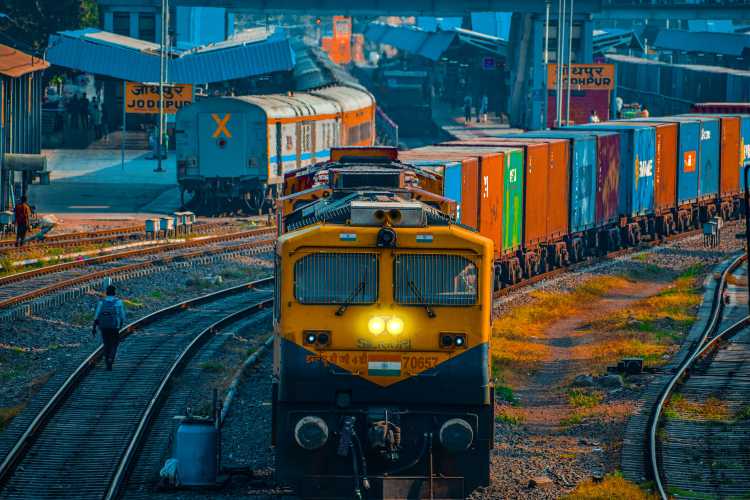
The ministry of railways has allocated Rs 14 trillion to expand passenger capacity to 10 billion, addressing concerns about affordability for the poor and the urgent need to decongest the system. The Union government’s budget will fund most of this investment. The Indian Railways received increased government attention after the coronavirus pandemic, leading to significant capital expenditure in this sector. The government has identified several areas for improvement in the coming year, with railway enhancement being a primary focus. Improving safety is expected to be one of these areas.
India is striving for self-sufficiency in its railway supply chain, with the initial step being to increase domestic production of locomotives. Already a major manufacturing hub, India now seeks to start exporting once a significant number of Vande Bharat trains are operational in India, according to railway minister Ashwini Vaishnaw. The Vande Bharat project, a key initiative of the Narendra Modi government, features trains designed in India.
READ | An AI revolution is shaking up jobs, markets, and society
Beyond physical infrastructure upgrades, the success of future railways hinges on technological integration and smart solutions. This includes automating maintenance systems, implementing smart signalling and traffic management, and exploring alternative fuels like hydrogen to enhance efficiency and environmental sustainability. Additionally, the railways can capitalise on emerging technologies like AI and data analytics to optimise operations, predict problems, and personalise passenger experiences. This data-driven approach can drive revenue through targeted marketing and dynamic pricing models, contributing to financial sustainability.
The ministry also plans to capture nearly half of the anticipated 3,000 million tonnes (MT) of cargo over the next decade, expanding the railway network by adding 14 km of track daily. Last year, approximately 26,000 km were added. This expansion began after the government combined the railway budget with the main budget. Indian railways currently transport 6.5 billion passengers annually, a figure that rose to 7 billion this year, with a goal of reaching 10 billion by 2030. The sector also aims to eliminate waiting lists.
Significance of Indian Railways
Beyond national connectivity, the railways can play a key role in fostering regional development and integrating remote areas. This requires strategic planning of new lines and stations, considering regional economic needs and tourism potential. By connecting rural communities to urban centres and promoting local businesses, the railways can contribute to balanced regional growth and empower marginalised communities.
While railways remain the most economical transportation mode for Indian passengers, this has led to lower profitability. The sector’s operating ratio, which compares working expenses to gross traffic receipts, has not improved, indicating a need for better profitability and capital investment. Railways offer about 55% concessions on travel, funded through internal revenues, with capital expenditures supported by government budget allocations.
While government funding is crucial, exploring sustainable public-private partnerships (PPPs) can accelerate infrastructure development and technological advancements. These partnerships can bring in private expertise and capital, reducing the burden on public finances. However, it is critical to ensure equitable access and affordability for all passengers, particularly vulnerable groups. Implementing social responsibility initiatives, such as subsidised fares for students and senior citizens, can ensure inclusivity and maintain the railways’ role as a vital social equaliser.
The sector must focus on profitability to avoid a situation similar to Air India’s. Investments should be reflected in revenue, especially as the freight segment is profitable but the passenger segment incurs significant losses. The Comptroller and Auditor General of India’s (CAG) report, presented to Parliament on August 8, 2023, indicated a Rs 68,269 crore loss in passenger services for 2021-22, with profits from freight traffic used to subsidise passenger services.
Despite the increase in capital expenditure based on the belief that the sector’s performance should be viewed in the context of its role in national economic growth, there is an urgent need to improve its financial health.
Improving safety
A recent catastrophic accident has underscored the urgency of enhancing safety standards in Indian railways. Critics argue that the government’s focus on high-profile projects like Vande Bharat has overshadowed crucial safety equipment upgrades. The CAG’s audit revealed that 75% of the 217 major train accidents between FY2018 and FY2021 were caused by derailments due to inadequate track maintenance.
In June 2023, Policy Circle reported that the government, despite having sufficient funds and resources, has prioritised new projects over addressing existing issues.
The Indian Railways has achieved significant progress in recent decades but now faces a pivotal moment. Ambitious initiatives like Vande Bharat trains and expansion plans demonstrate forward-thinking. However, the government must prioritise safety and achieve financial sustainability to elevate the sector to new heights.

